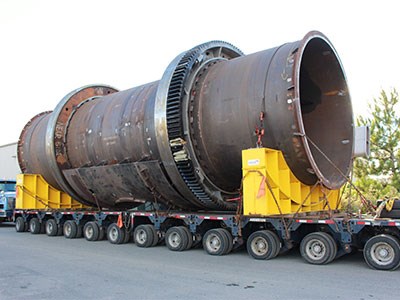Vale received the second of three new converter vessels for its Copper Cliff Smelter Aug. 11 as part of the company’s $1-billion Clean AER Project.
The converter vessel weighs around 100 tonnes and is 14 metres long and 4.2 metres around. It is the second of three converters that are fabricated in Lively (a suburb of Sudbury) by Anmar for the project.
“The delivery of this converter, which was fabricated here in Sudbury, marks significant progress in the advancement of the Clean AER Project,” said Dave Marshall, director of the Clean AER Project, in a press release.
The Clean Atmospheric Emissions Reduction Project is one of the largest single environmental investments in Ontario’s history. It will reduce sulphur dioxide emissions by 85 per cent and greenhouse gas emissions by 40 per cent from current levels. It will also reduce dust and metals emissions a further 35 to 40 per cent.
The project involves a complete retrofit of the converter aisle in the Copper Cliff Smelter. Sulphur dioxide that currently goes up the superstack from the converters will be captured in a new wet gas cleaning plant, sent to the acid plant, converted to sulphuric acid and sold.
Greater Sudbury Regional Police provided an escort to guide the wide-load delivery through the city, and traffic was delayed temporarily during the evening delivery period.
Vale has said the installation of the new technology would eliminate the need for the company’s iconic superstack. Built in 1972, the 1,250-foot chimney was constructed to disperse sulphur dioxide and nitrogen dioxide emissions from the smelter over a wide area to lessen the smelter’s environmental impact.




